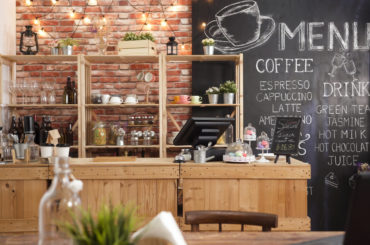Years ago, when Nashville reached a population count that drew a new breed of big-box chain restaurants to stake a claim on our dining landscape, and especially as franchise-happy Cool Springs emerged from Williamson County farmland, the Scene decided to review the first location of each of those.
They visited the first Olive Garden in the area, located on Galleria Boulevard, one evening. It wasn’t that it was bad; especially if one enjoys a lot of cheese, sweet sauces, and large servings. They simply didn’t get the anticipation surrounding its arrival.
So, before the author started writing the review, he gave an Olive Garden enthusiast friend in Texas a call and asked her what she liked best about the restaurant. She retorted, “Three things: I love the breadsticks, I love the bottomless salad bowl, and I love that it’s not too Italian.”
There you have it, ladies, gentlemen and fluid, the recipe for America’s most popular chain “ethnic” eateries. P.F. Chang’s, Chipotle Mexican Grill, Au Bon Pain, and Olive Garden are not overly Chinese, Mexican, French, or Italian, respectively.
Il Forno is wholly Italian, save for its neighborhood location at the end of Third Avenue South, between Wedgewood-Houston and Chestnut Hill. Naples-born chef Egidio Franciosa grew raised there and founded the restaurant there with his wife and business partner Jannah in December 2021. The wood-burning brick oven for the restaurant was made by third-generation artisan Stefano Ferrara in Naples, imported to California, delivered to Nashville, erected in the Il Forno kitchen, and hand-dipped in shining gold-penny tiles by an Italian craftsman on site.
A famous photograph of the great Italian actress and siren Sophia Loren lustily devouring a piece of bread is displayed floor to ceiling in Il Forno. Italian-American Nashvillian Tarabella Aversa, who also painted the paintings on the patio walls, painted it by hand.
The sparkling water and sodas are imported from Italy, the wine list features Italian wines, the cocktail menu features Italian classics like the Negroni and the Aperol spritz, the after-dinner drinks include limoncello, sambuca, amaro, and grappa, and Peroni is sold by the bottle.
Every item on the menu, from the simplest to the most complex, fully realizes the tastes, ingredients, customs, and cooking methods of Italy. Even though each dish’s English descriptions are brief, they are all titled in Italian. Most significantly, the pizza and breads are made with 00 Caputo flour, the benchmark for true Neapolitan pizza, which is manufactured by the Naples-based company Antimo Caputo.
Order a plate (or more, depending on the size of your group) of focaccia Napoletana, a fluffy, chewy round of the rustic bread, with salt and oregano sprinkled on top and blistered in the 900° oven. Take a cue from La Loren. Pass the platter, take a chunk off, and dip it in the tangy olive oil. The evening’s beginning special of a pair of big meatballs dipped in a potent marinara and topped with a melted dollop of mozzarella was served using pieces as a scoop.
Two carpaccios are served as the first course. Then came along a magnificent and immaculate work of art, a creative combination of virtually transparent octopus pieces, fingerling potatoes and shallots, cherry tomatoes cut in half, and a tiny nest of wild arugula with a touch of lemon dressing.
The gentle touch with the dressing is appreciable, which doesn’t drown the greens but instead enriches them, as the sherry vinaigrette does to the arugula at the heart of the Zio Franco, one of five salads on the menu, which also has candied walnuts, red wine poached pear, and goat cheese.
The fresella pours a scoop of diced, salted Roma tomatoes marinated in olive oil onto a round of bread on a wooden cutting board. She then tops the bread with several thick slices of soft cheese, which lean more toward mozzarella than burrata as specified on the menu. Similar to the cioppino tomato broth, which had only mussels and shrimp instead of the clams listed on the menu despite the fact that the bowl literally overflowed with the two shellfish, the cod or halibut chunks common to most preparations of the Mediterranean fish stew was also missing.
One needs to carefully consider which homemade pasta pairs best with a given sauce, such as wild-caught octopus ragu, Bolognese, black truffle sausage with cream sauce, or lamb ragu with porcini mushroom. In this case, the decision had already been made in the kitchen by the expert. The latter option was chosen, and every strand of green fettuccine was coated in an earthy sauce that perfectly balanced the flavors of the meat and mushrooms, resulting in a delicious meal.
Perhaps there are those who have long proclaimed Bella Napoli Pizzeria’s pizza to be the greatest in Nashville, just like the author’s family. In 2014, owner Paolo Tramontana hired Chef Egi for his kitchen and brought the Franciosas from California to Nashville. The success of the Il Forno pizza truck, which began traveling in 2017, may have been followed by some. This success allowed the Franciosas to fund their ambition of opening a brick-and-mortar restaurant.
You’ll want to learn how to make pizza like Chef Egi does because he is an expert. Six are tomato-based, including the traditional margherita, and all are completed with fior di latte, a milder type of mozzarella. The fior di latte foundation is topped with six white pizzas. Numerous toppings include Italian meats, cheeses, and Mediterranean veggies. Fresh basil is also liberally sprinkled on top. The Stefano Ferrara oven is beautiful because of its intense heat, which chars the crust’s edge and produces the pizza’s distinctive blackened air bubbles while keeping the base flexible enough to fold in half and be eaten with one hand as it was meant to be.
There is always room for panna cotta, and Il Forno’s version is not to be missed because it is served with a seasonal fruit compote. Because it is so light, you may also indulge in tiramisu, which passed the author’s pastry chef dinner companion’s inspection with flying colors.
The noise level at Il Forno was impossible to ignore. The open dining area and kitchen, high metal ceiling, concrete floor and walls, lots of glass, bare wood tables, metal-framed chairs, and lots of glass all contributed to the problem. The author sat at a circular table of four that was sandwiched between tables along one wall and the wood bench that separated the eating area from the bar. It was impossible to hold a conversation without raising voices significantly and hunching over the table. Despite the delicious cuisine, the fight for attention made the event less enjoyable overall. This is a common problem in modern restaurants located in renovated areas, but there are sound-canceling techniques and mitigators that can be implemented to reduce the noise. If the author were to return to Il Forno, they would request a spot on the banquette or a table against the wall, or sit on the wonderful patio.
However, the author believes that, in all honesty, they would prefer a noisy gathering of family and friends at a crowded table, passing dishes, sipping wine, laughing, talking, and even yelling at one another. It is a fundamentally Italian experience that they would take any day over a “not too Italian” one.



